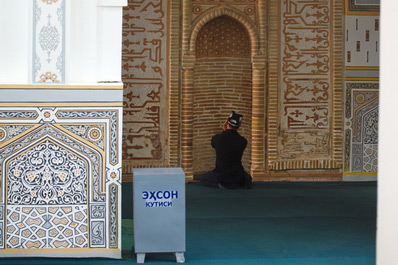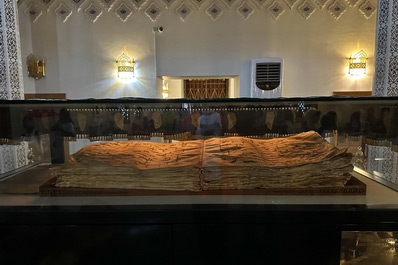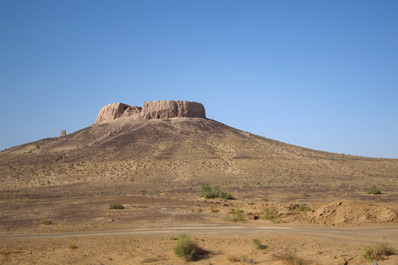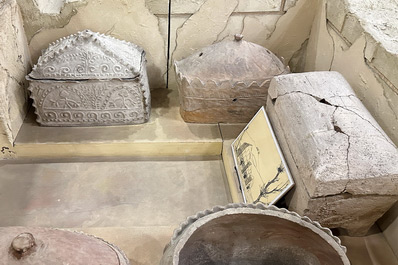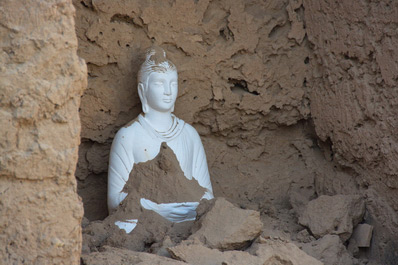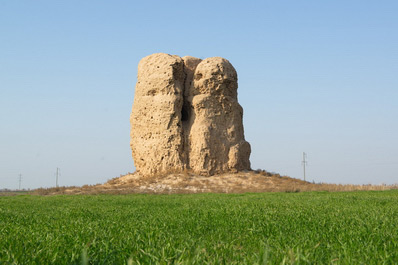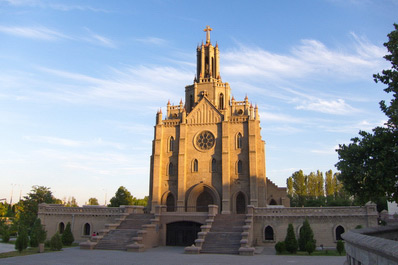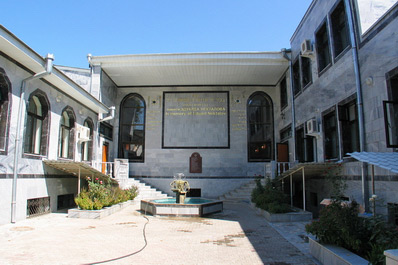Religion in Uzbekistan
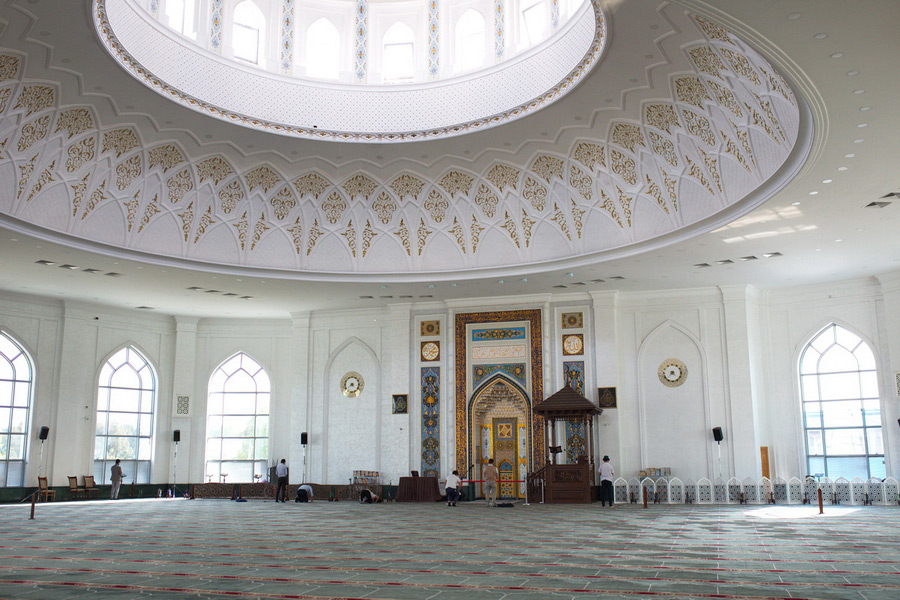
Uzbekistan is home to three main official religions: Islam (95%), Christianity (5%), and Judaism (0.2%). The country is rich in cultural diversity, with over 140 national cultural centers representing more than 130 ethnicities, along with 16 religious denominations, which are represented by 2,333 organizations. A deeply rooted tradition in Uzbekistan is the respect and tolerance for all nationalities and faiths. Interestingly, what we now associate with Islam, Christianity, or Judaism actually traces its origins back to ancient times.
Islam
Islam began to spread in Central Asia in the 8th century, and today it is practiced by 95% of the population in Uzbekistan. Each city across the country is home to sacred sites: in Samarkand, you’ll find the Shah-i-Zinda necropolis, Hazrat Khizr Mosque, and Bibi-Khanym Mosque; in Bukhara, the Maghoki-Attori Mosque and Baland Mosque; in Shakhrisabz, the Kok-Gumbaz Mosque; in Khiva, the Ak Mosque and Juma Mosque; and in Tashkent, the Namazgoh and Minor Mosques, along with the Hast-Imam religious complex, where one of the world’s oldest Qurans, the Quran of Osman, is kept.
For those interested in Sufism, an important branch of Islam, Uzbekistan offers a rich heritage of Sufi holy sites. The country was home to many great Sufi preachers, including Abu Isa at-Tirmizi, Khoja Abdulkhaliq Gijduvani, Sheikh Najmuddin Kubra, and Sheikh Bahauddin Naqshband. Their tombs and mausoleums, such as the memorial complexes of Bahauddin Naqshband and Qiz-Bibi near Bukhara, the mosque and tomb of Khoja Ahrar, and the Ruhabad Mausoleum in Samarkand, are pilgrimage sites that draw visitors seeking spiritual connection. In Tashkent, significant sites include the mausoleum of Sheikh Zaynuddin-Bobo, the Sheikhantaur mausoleum, the Imam Kaffal Shashi mausoleum, and the Zangiota Mausoleum in the Tashkent Region.
Zoroastrianism
Zoroastrianism, recognized as the world’s first major religion in Uzbekistan, originated in ancient Khorezm during the 7th-6th centuries BCE. The religion’s name is derived from its founder, Zoroaster (Zarathustra), and the sacred text, the "Avesta", was created in Khorezm. Ancient Zoroastrian monuments still stand today in the Khorezm region and Karakalpakstan, such as the Mizdahkan necropolis, Chilpyk Dakhma and the fortresses of Ayaz-Kala, Toprak-Kala, and Koy-Krylgan-Kala. These ruins have revealed traces of fire temples, ceramic items, and sculptures. According to legend, the oldest mosque, Maghoki-Attori near Bukhara, was built on the site of a fire-worship temple, reflecting the ancient spiritual heritage of the area.
Buddhism
Buddhism, practiced by 0.2% of Uzbekistan’s population, primarily by ethnic Koreans, has a long history in the region. Buddhist teachings were introduced by missionaries during the Zoroastrian era, around the 1st century CE, within the Kushan Empire. As Buddhism spread along the Silk Road, it reached China and Japan, flourishing particularly during the reign of Kanishka. Important Buddhist monuments are located near Termez, including Kara-Tepe, Fayaz-Tepe, Dalverzintepa, Balalyk-Tepe, and the Zurmala Stupa. In Tashkent, a Buddhist temple, opened in 2001, stands as a "piece of Zen in Uzbekistan," offering a unique space for spiritual reflection.
Christianity
Christianity has been present in the territory of modern Uzbekistan since the 5th century, with three main branches: Orthodox, Catholic, and Protestant.
Orthodox Christianity was introduced in Uzbekistan in 1871, and today, it is practiced by 5% of the population. In Tashkent, the first Orthodox church was established at the Tashkent Hospital, which is now the Cathedral of the Dormition of the Mother of God, the main church of the Tashkent Diocese. Across the country, there are 38 registered Orthodox churches in cities such as Tashkent, Bukhara, Ferghana, Gulistan, and Samarkand. In the capital, you’ll also find the Roman Catholic Church of the Most Sacred Heart of Jesus and the Evangelical Lutheran Church (the German kirche). These churches host significant celebrations such as Christmas and Easter, open to anyone who wishes to join.
Judaism
Judaism is practiced by 57,000 people in Uzbekistan, making up 0.2% of the population. The Jewish community has been present in the region since the 5th century, with settlements in cities like Bukhara, Kattakurgan, Samarkand, Tashkent, Karshi, Shakhrisabz, Kokand, Margilan, and others. The first major synagogue in Tashkent was established in 1899. Today, there are 10 active synagogues across the country, located in Tashkent, Bukhara, Samarkand, Kokand, Ferghana, and Andijan. Among the most notable are the synagogues near the Lyabi-Hauz ensemble and the Ohel Yitzhak in Bukhara, as well as the Kanesoi Gumbaz in Samarkand, which is a protected historical monument. The Jewish community in Uzbekistan is supported by the Association of Jewish Communities of Uzbekistan, with three main cultural centers in Tashkent, Samarkand, and Bukhara.
Today, Uzbekistan is a place where various religions coexist peacefully, and people come together to celebrate different holidays—Muslims congratulate Christians on Easter, Christians celebrate Khait, and everyone participates in the Navruz festivities, which have roots in Zoroastrianism. As you travel through Uzbekistan, you can witness this harmony firsthand. For those interested in delving deeper into the history of religion in Uzbekistan or setting out on a pilgrimage, there are specialized religious tours available.


